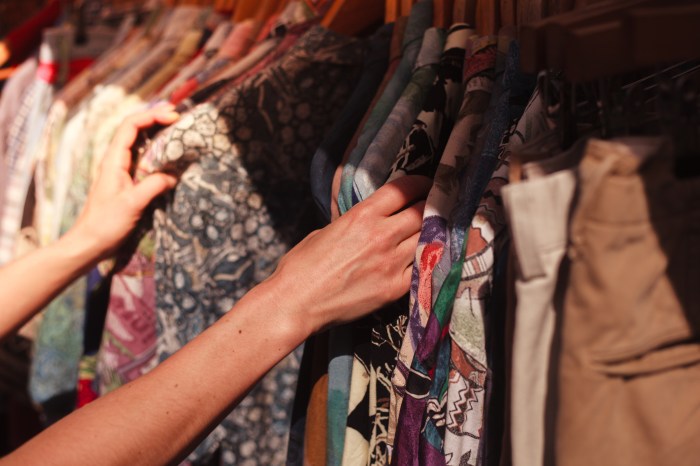By Alex Berger
I recently learned that the “Browsers” radio program, which emanated from Chicago and beamed throughout the country for more than 22 years, was abruptly dropped by its radio station. It was one of the few programs left in America that was keeping the big band fires alive. The big band sound, combining and integrating many musical instruments — brass, woodwind, string and percussion — to achieve an all-encompassing, ensemble sound, is systematically being drained from the musical life of America.
The “Browsers” had emphasized the vintage recordings of the 1930s, 1940s and 1950s, interspersing them with swing memorabilia, quizzes and appropriate historical data, for their special, somewhat older, audience (although a growing number of younger listeners were also beginning to tune in). The program was not heard in New York City. However, Gloria and I tried to catch it whenever we traveled to the locations carrying it.
Its demise, apparently ordered by a 30-year-old program manager who deemed the music “old fashioned,” pulled the plug on this all-American art form which flourished from 1935 through 1948. I doubt that this musical maven ever heard one strain of Benny Goodman’s or Glenn Miller’s music, or was aware of its great appeal to millions of Americans over the age of 30. Me thinks he should have consulted his parents before contemplating the dropping of the program. But, it was done, and, alas and alack, another big band outlet was silenced.
The news of the “Browsers’” demise came from my good friend, Phil Holdman, one of the co-hosts of the show. He kept me abreast by sending tapes of those I may have missed. Phil has stored in his basement just about every song (78s, 45s, 33 l/3s, CDs and tapes) ever recorded during the big band era. He would send copies of any requested song to anyone for the price of postage. He sent out hundreds.
Now you ask, why would I, younger than the average big band devotee, develop such a strong passion for big band music? It all began while I was still an infant in the crib. As the seventh youngest of eight music-loving children, I was literally weaned on its music.
The family’s radio was constantly tuned to WNEW, the call letters of the station playing big band music. Its disc jockey, Martin Block, called his program “The Make Believe Ballroom,” and, believe me, our house was. My older siblings sang and danced to this music while eating, conversing and showering, from dawn to dusk.
And when they were able to scrape a few pennies together to buy a favorite recording, they played the treasure on our large hand-wound console Victrola which stood majestically adjacent to my crib, the only space available for it. I didn’t get much sleep, but boy, was I a bouncing baby. When I outgrew my crib and became a toddler, and then a growing youngster, I continued to stand next to that Victrola and drink in the music emanating from it.
I especially enjoyed watching my older brothers, Jack and Larry, and my older sisters Anna, Florence, Miriam and Shirley return from school. They would greet me “trucking” in (dancing with pointer-fingers waving in the air), which, they said, lit up my smiling face every time. Ah, yes, those were the days!
Some people insist that the decade of the 1920s created the greatest popular music of the 20th century, with the performances of such entertainers as Al Jolson, Russ Colombo and Paul Whiteman’s orchestra. But, for me, the 1930s and the beginning of the big band era were when my musical journey began. This was the period of big flashy jukeboxes, garishly displayed in every ice cream parlor and coffee shop, waiting for the “cats” to feed it with nickels. It played their favorite songs, music they were able to foxtrot or jitterbug to with a partner they could hold closely. If you want to see an example of this marriage of song to dance, see the current Broadway production of “Contact.” The stage is filled with lively young dancers doing their thing to Benny Goodman’s instrumental, “Sing, Sing, Sing.” Simply dazzling!
The big band craze continued on into the l940s. These were the war years when spouses and sweethearts were separated. The orchestras played dreamy songs like “I’ll Walk Alone,” “When the Lights Go On Again,” “Praise the Lord and Pass The Ammunition,” “I’ll Be Seeing You” and “White Christmas,” which brought tears to the eyes of the homefolk left behind, and to the GIs fighting in far-away countries of the world.
The 1950s were a period when the big bands began to wane. Many of the great orchestras were forced to disband because of the lack of bookings. Others resorted to one-night stands in hotel ballrooms on Saturday nights to make a living.
The 1950s became the decade of the vocalists. Who can ever forget Frank Sinatra, Perry Como, Frankie Laine, Mel Torme, Andy Russell, Tony Martin, Dick Haymes, Bing Crosby, Ella Fitzgerald, Peggy Lee, Dinah Shore, Doris Day and Helen O’Connell? The big bands featured them.
The 1960s and beyond, fuhgeddaboudit! Although I do enjoy rock and roll, doo-wop, country and folk songs and calypso, can they compare to the recordings of Benny Goodman (who broke the color barrier by hiring black musicians), Artie Shaw, Glenn Miller, Tommy Dorsey and the others?
I will regret the inevitable passing of big band music. It simply was the greatest music out there. Our rich musical culture will be made that much poorer.
Regarding my Jan. 10 column on past blizzards, reader John Quinn e-mailed that the 1947 storm occurred on the Friday after Christmas, not before as I had written. Thanks, Mr. Quinn, I stand corrected.
Reach columnist Alex Berger by e-mail at TimesLedger@aol.com or call 229-0300, Ext. 140.

































